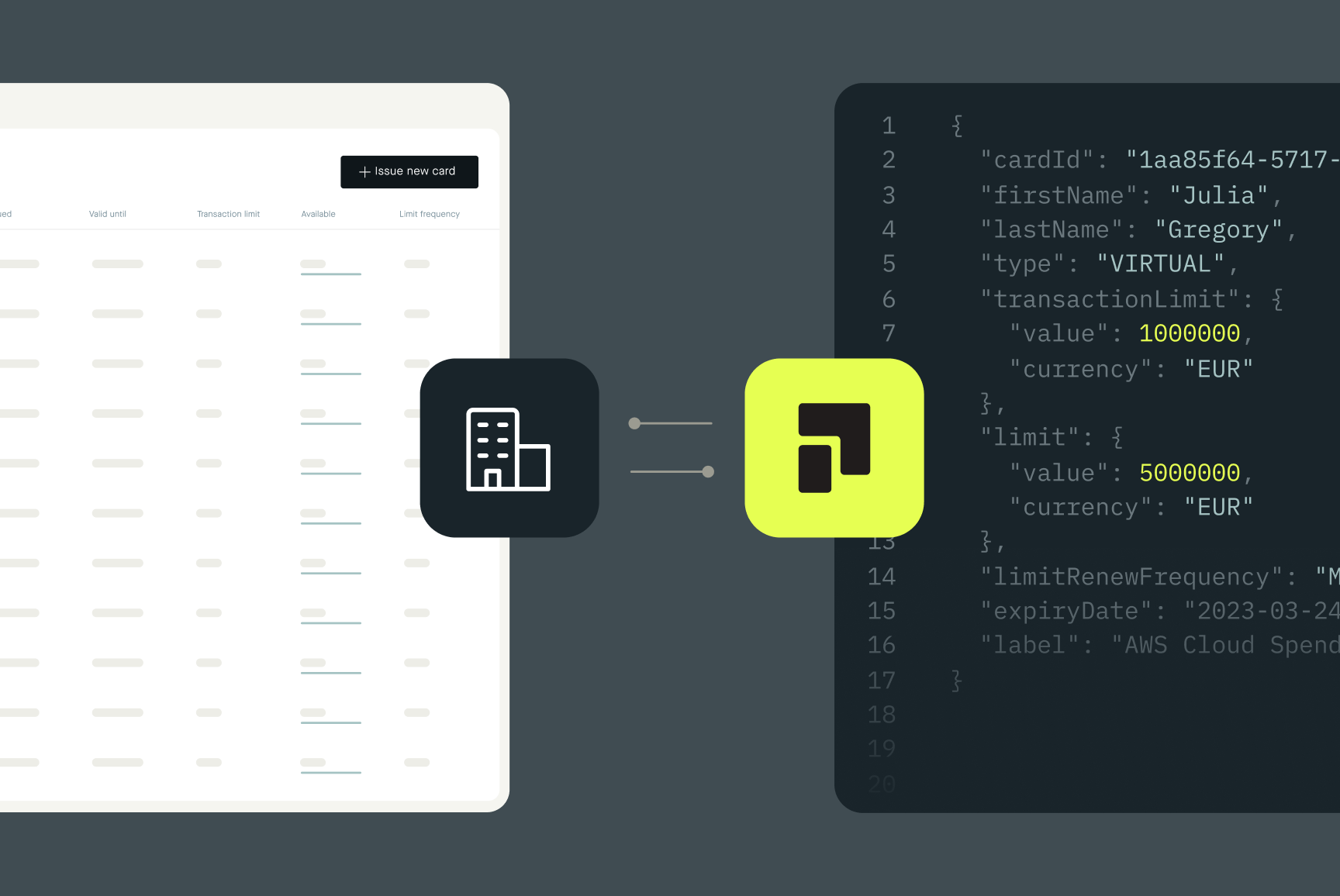Virtual credit cards for e-commerce: Unlocking high credit limits and real cashback rewards
With more and more entrepreneurs choosing to start online businesses, there has been a significant shift towards e-commerce in recent years, and for good reason. Statista reports that the European e-commerce market is projected to surpass the one trillion dollar mark in revenue by 2027, reflecting its continued rapid growth and dynamism.


As mentioned above, several factors, including the growing popularity of online shopping, advances in technology, and the increased accessibility of online marketplaces, have contributed to the rise of e-commerce.
And although starting an online business offers many benefits - such as low start-up costs and the ability to reach a global audience - it also comes with its own set of challenges.
For one thing, competition in e-commerce can be fierce. And cumbersome processes like inventory and receipt management, payment processing, reporting, shipping, returns, and fraud prevention can be extremely daunting.
Luckily, in this article we will explain how e-commerce businesses can reduce their operational burden by using virtual cards while earning real money back on every transaction.
Why do e-commerce businesses face obstacles in finding the right credit cards?
Before we get into the nitty-gritty, here is a quick primer on the difference between traditional banks and modern corporate card institutions.
Traditional banks vs Modern corporate credit card institutions
Traditional banks and modern corporate credit card institutions differ in their focus and approach to serving businesses.
Traditional banks have historically been the go-to source for borrowing and lending to businesses. Unfortunately, getting a credit card from a traditional bank is a long and complex process that requires extensive paperwork and is particularly difficult for small or new companies.
In contrast, modern corporate credit card institutions focus on providing credit and other financial services tailored to the needs of business. They offer streamlined applications, faster approvals, and lines of credit that are quickly accessible, all designed to help businesses manage their finances more efficiently.
Additionally, some of them offer unique features like virtual credit cards and customized rewards programs that provide additional benefits.
Overall, while traditional banks remain a staple for many businesses, modern corporate card institutions offer businesses of all sizes a streamlined, efficient approach to managing finances.
Struggles e-commerce businesses face with traditional banks
E-commerce businesses face several challenges when dealing with traditional banks. Here are a few:
1. Long payment times (wire transfers) when buying products from overseas
When purchasing products from foreign suppliers, especially from countries like China, e-commerce businesses often experience long payment delays because they rely on wire transfers. Traditional bank processes for international transactions can be slow and cumbersome, resulting in delayed shipments and potential supply chain disruptions.
2. Marketing card gets blocked when spending is high
E-commerce businesses rely heavily on marketing activities to drive sales and promote their products. However, when spending reaches high levels, traditional banks may impose restrictions on the use of credit cards. This can be particularly frustrating for ecommerce businesses as it hinders their ability to run effective marketing campaigns and limits their potential to grow.
3. Long processing times for supply chain parties
The e-commerce supply chain involves multiple parties. These include manufacturers, distributors, and shipping companies. Traditional banking processes often lengthen processing times at various supply chain stages. These delays can impact order completion, inventory management, and ultimately customer satisfaction.
To help alleviate some of these problems, e-commerce businesses can consider working with a financial institution that offers transparent exchange fees, high-velocity cards, and competitive rates.

Pliant enables e-commerce companies to stay ahead of fashion trends and sales seasons
For e-commerce businesses, the benefits of using Pliant go beyond purchasing goods.
In fact, one of the most important benefits of using Pliant is the ability to maximize marketing campaigns, making it the perfect tool for staying ahead of the curve in the dynamic world of fashion trends and sales seasons.
Pliant enables e-commerce businesses to maintain a competitive edge by removing the barriers that traditional banks often place on high spending. As a result, e-commerce businesses have a competitive advantage and can take advantage of every opportunity to expand their marketing efforts.
Advantages of High Velocity Credit Cards for e-commerce businesses
High Velocity Payment Instruments (HVPIs), also known as High Velocity Payment Cards (HVPCs), are virtual credit cards that enable fast and secure transactions with high credit limits. They are designed for businesses requiring frequent, high-value transactions, such as e-commerce businesses.
They make it possible for businesses to make larger purchases and to scale up their operations more quickly. It also provides enhanced security features to prevent fraud, which is especially important for online merchants operating in a cyberthreat environment.
Plus, they often offer real money back on every purchase! This can help reduce costs and increase profitability, which can add up to significant savings over time.
How are virtual credit cards (VCCs) and cashback programs revolutionizing e-commerce?
For e-commerce businesses looking to increase security, reduce costs, and gain a competitive edge, VCCs and cashback rewards can be a great option.
Here’s why:
High-velocity cards with high transaction volumes: By providing a more flexible and secure payment solution for e-commerce businesses, virtual credit cards offer higher transaction volumes than traditional banks.
Instant card generation: Virtual credit cards can be created and used instantly. This allows merchants to process transactions quickly and efficiently. Traditional banks no longer need to issue physical cards or run lengthy credit checks.
Simplified cashback rewards redemption: To make it easier for e-businesses to redeem their rewards and enjoy the benefits of their cashback rewards. Some institutions can offer simplified redemption processes, such as automatic statement credits or cashback deposits.
Real-time exchange rates: Virtual credit card issuers can provide real-time exchange rates for international transactions, giving retailers more accurate and up-to-date information on transaction costs. This can help them avoid surprises and be more in control of their spending.
Seamless integration with other financial tools: some VCC issuers offer a smooth integration with other financial tools, helping merchants track expenses and better manage currency exposure and receipts. This will help e-businesses avoid losses and better manage their liquidity.
Multiple generation of single-use cards: conveniently, VCCs can have multiple card numbers associated with a single account, allowing e-businesses to generate unique card numbers for different purposes and transactions. It is harder for scammers to steal card information and use it to commit fraud.
Global acceptance: Pliant Virtual credit cards are powered by Visa and accepted worldwide, enabling e-commerce businesses to process transactions with ease.
Why are VCCs the go-to option for e-commerce businesses?
To sum up, virtual credit cards have become an increasingly popular payment method for e-commerce businesses because of the benefits they offer.
Such as:
Higher cash back rewards (which can be a significant source of savings over time)
Enhanced security features
Greater flexibility in managing payments
As a result, they can optimize their financial performance and increase their profitability.
💳 To discover how other e-commerce companies are experiencing the advantages of our best-in-class corporate credit card solution, click here.






